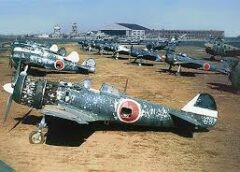
### Introduction
Japan’s rise from the ashes of World War II to becoming a global economic powerhouse is often hailed as one of the most remarkable economic transformations in history. Referred to as Japan’s “economic miracle,” this journey is characterized by rapid industrialization, technological innovation, and strategic economic policies that propelled the nation onto the world stage. Let’s delve into how Japan achieved this monumental turnaround and its enduring impact on the global economy.
### Post-War Reconstruction and Industrialization
#### 1. Devastation and Rebuilding
In the aftermath of World War II, Japan faced unprecedented devastation. Cities lay in ruins, industries were decimated, and the economy was in ruins. The immediate focus shifted towards rebuilding infrastructure, providing basic necessities, and restoring the nation’s morale.
#### 2. Industrial Policy and Government Support
Key to Japan’s recovery was a series of visionary industrial policies and robust government support. The Japanese government, in collaboration with industry leaders, implemented strategic initiatives to foster industrial development. These included investments in critical sectors, incentives for export promotion, and fostering collaboration between government and private enterprises.
### Technological Advancement and Innovation
#### 1. Focus on Technology and Quality
Japan distinguished itself by prioritizing technological advancement and product quality. Companies such as Toyota, Sony, and Honda emerged as global leaders by producing high-quality goods known for their reliability and innovation. This focus on excellence propelled Japanese products into international markets, setting new standards in manufacturing.
#### 2. Continuous Improvement
Central to Japan’s industrial success was the concept of “Kaizen,” or continuous improvement. Rooted in the philosophy of constant refinement and efficiency enhancement, Kaizen became a cornerstone of Japanese business culture. It not only boosted productivity but also ensured that Japanese industries maintained a competitive edge globally.
### Global Economic Dominance
#### 1. Export-Led Growth
Japan adopted an export-led growth strategy, leveraging its manufacturing prowess to capture international markets. Products ranging from electronics to automobiles became synonymous with Japanese craftsmanship and reliability, driving significant economic growth.
#### 2. Global Investment and Expansion
Japanese corporations expanded globally through strategic investments and acquisitions. By establishing manufacturing facilities abroad and forming international partnerships, they contributed significantly to global supply chains and diversified their market presence.
### Challenges and Lessons Learned
#### 1. Bubble Economy and Economic Challenges
Despite its rapid ascent, Japan faced challenges, notably the bursting of the asset price bubble in the late 1980s. This led to a prolonged period of economic stagnation, known as the “Lost Decade,” characterized by sluggish growth and deflationary pressures. It underscored the risks of speculative investment and prompted Japan to pursue structural reforms.
#### 2. Adaptation and Resilience
Japan demonstrated resilience by adapting to evolving global economic dynamics. It diversified into new sectors such as robotics, renewable energy, and healthcare, continuing to innovate and maintain its position as a global economic leader.
### Conclusion: Legacy and Future Prospects
Japan’s economic miracle transformed it from a war-torn nation into an economic juggernaut that shaped global markets and set benchmarks in technology and innovation. While challenges have tested its resilience, Japan’s commitment to quality, innovation, and strategic economic policies continues to define its economic trajectory. As it navigates the complexities of a globalized world, Japan’s journey—from destruction to dominance—stands as a testament to the power of perseverance, innovation, and visionary leadership.
### Title: “From Destruction to Dominance: Japan’s Economic Miracle”
This title encapsulates Japan’s extraordinary transformation from post-war devastation to becoming a global economic powerhouse. It highlights Japan’s resilience and strategic vision that enabled it to achieve economic dominance and influence global economic trends for decades.

